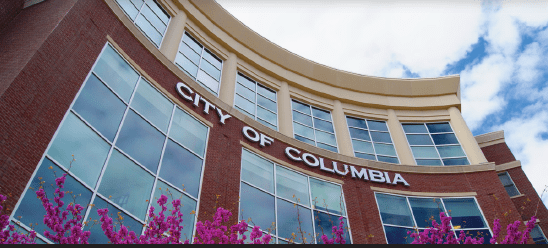What are Columbia's sister cities?
Columbia enjoys active Sister City relationships with five cities:
Kutaisi, Republic of Georgia
Kutaisi, Republic of Georgia
Founded 3,500 years ago, Kutaisi is located in west-central Georgia along the Rioni River. It is the second largest city in the Republic of Georgia. The subtropical climate typically brings cold, wet winters and hot, dry summers. It is located on the junction of the main east-west highway on the road to Russia. According to Greek Mythology, Kutaisi was the city where Jason robbed the golden fleece.
Kutasi became our sister city on April 22, 1997. View the sister city proclamationopens PDF file .
Population: 250,000
Land Area: 65 Square Kilometers
Interim Mayor: The Honorable Giorgi Tevdoradze
A Call To Serve (ACTS) is an international relief organization established in 1991 to help rebuild the healthcare foundation in the Republic of Georgia which used to be part of the Soviet Union. As sponsors of Columbia’s Sister City relationship with Kutaisi, ACTS has provided a variety of humanitarian aid for nearly seventeen years.
Suncheon City, Republic of Korea
Suncheon City, Republic of Korea
Known as the City of Beautiful People, Suncheon is a flourishing agricultural and industrial city in South Korea. It’s beautiful scenery includes, lakes, rivers, mountains, forests, and many cultural relics around the city and landscape.
During the Samhan Dynasty Suncheon City was known as the Territory of Mahan. On Jan 1, 1995, it was was reborn as “Suncheon City” after annexing Sungjukun. Suncheon became our sister city on October 18, 1991. View the sister city proclamationopens PDF file .
City of Columbia Natural Resources Supervisor Brett O’Brien writes a photo diary in the March edition of “City Trees”. The article focuses on his October 2011 visit to South Korea (pages 30-37)
Portrait of a Sister City: Suncheon, Korea:
Population: 271,164 (2006)
Land Area: 907.21 Square Kilometers
Hakusan City, Japan
Hakusan City, Japan
Hakusan is the largest city in terms of land area located in the Ishikawa District of Japan. It was founded in February 2005, when the city of Matto merged with many smaller villages of Ishikawa. Hakusan mountain range runs through the south of the city, with an average height between 100-200 meters. The population is over 112,000. The climate averages as one of the highest rain and snowfalls in Japan. Hakusan became our sister city in February 2005.
Portrait of a Sister City: Hakusan, Japan:
Population: 110,654 (2008)
Land Area: 755.17 Square Kilometers (291.57 sq mi)
Sibiu, Romania
Sibiu, Romania
Sibiu is located near the geographical center of Romania and has a temperate-continental climate. For Sibiu, a city over eight centuries old and a convergent point of numerous economic and spiritual influences, musical manifestations have been a constant part of the city life. Population: 170,000 and it has been inhabited since 300 BC. Romanian is the official language.
Sibiu became our sister city on June 22, 1994. View the sister city proclamationopens PDF file .
Population: 169,460
Mayor: Klaus Werner Johannis
Laoshan District, Qingdao, Shandong Province, People’s Republic of China
Laoshan District, Qingdao, Shandong Province, People’s Republic of China
Qingdao City is located in the southern part of Shandong Peninsula. It is a key economic center, open coastal city and tourism spot in China. Laoshan, named after Laoshan Mountain, is one of the 7 urban districts and is located on East part of Qingdao. This region has a north temperate zone monsoon climate w/ moderate temperatures all year.
Laoshan has three national class areas inside, namely the Hi-tech Industry Development Zone, Shilaoren National Tour Resort and Laoshan Scenic Spot, ideal for investment and commercial activities.
Became our sister city on May 17, 2006. View the sister city proclamationopens PDF file .
Qingdao population: more than 8.1 million
Laoshan population: 191,400
Land Area: 389.34 square kilometers
District Director: Honorable Wang Wei Da
Columbia Friends of China
The Columbia Friends of China is a community-wide nonprofit organization promoting educational, economic, and cultural relations between Columbia, Missouri and Laoshan, China. As sponsors of Columbia’s Sister City relationship with Laoshan, the Columbia Friends of China plans a variety of events throughout the year. In August 2007, they sponsored local bluegrass band Ironweed’s participation in the Qingdao Beer Festival in Laoshan, China.
What are the guidelines for the Sister City program?
The City Council, in 1996, passed a policy resolution that established guidelines for Sister City relationships.
How does the Sister City program benefit the cities involved?
The Sister City program provides a means of fostering mutually beneficial relationships with cities in other countries through:
- Creating opportunities for citizens in Columbia and the Sister City to learn and experience other cultures through long-term relationships.
- Creating an atmosphere in which economic development and trade can be explored, implemented and strengthened.
- Opening dialogue and addressing issues ranging from cultural to technical, from municipal to medical, from environmental to educational and beyond.
- Stimulating environments through which partnerships can creatively learn, work and solve problems together.
Sister Cities Programs include cultural and educational exchanges. Columbia Public Schools, for example, participates in an ongoing exchange program at the junior high school level. Organized groups of junior high school students alternate summer visits between Columbia and Hakusan City, Japan. For example, one year Columbia students visit Hakusan City and the next year, Hakusan City students visit Columbia.
Where can I get more information on the Sister City program?
Visit the Sister Cities International website or contact the Office of Cultural Affairs for additional information.

